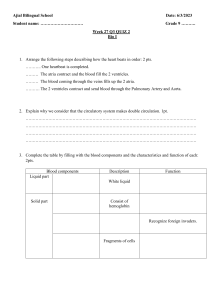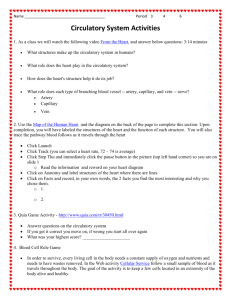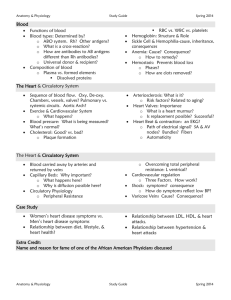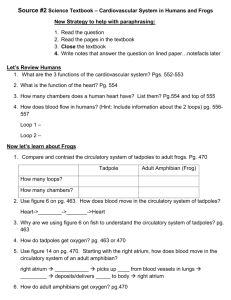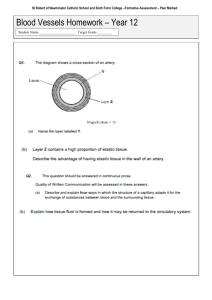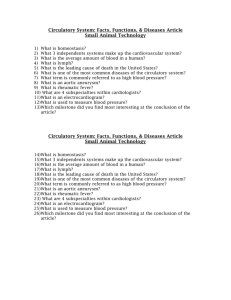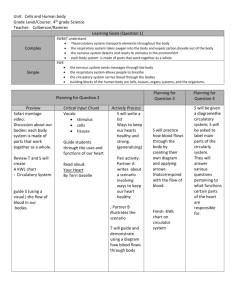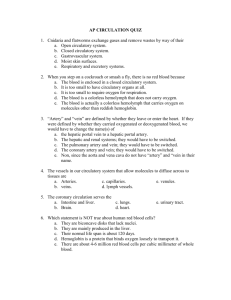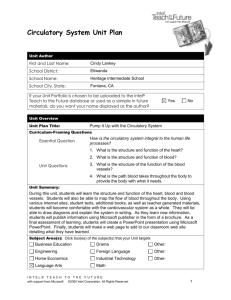Worksheet: Circulatory System
advertisement
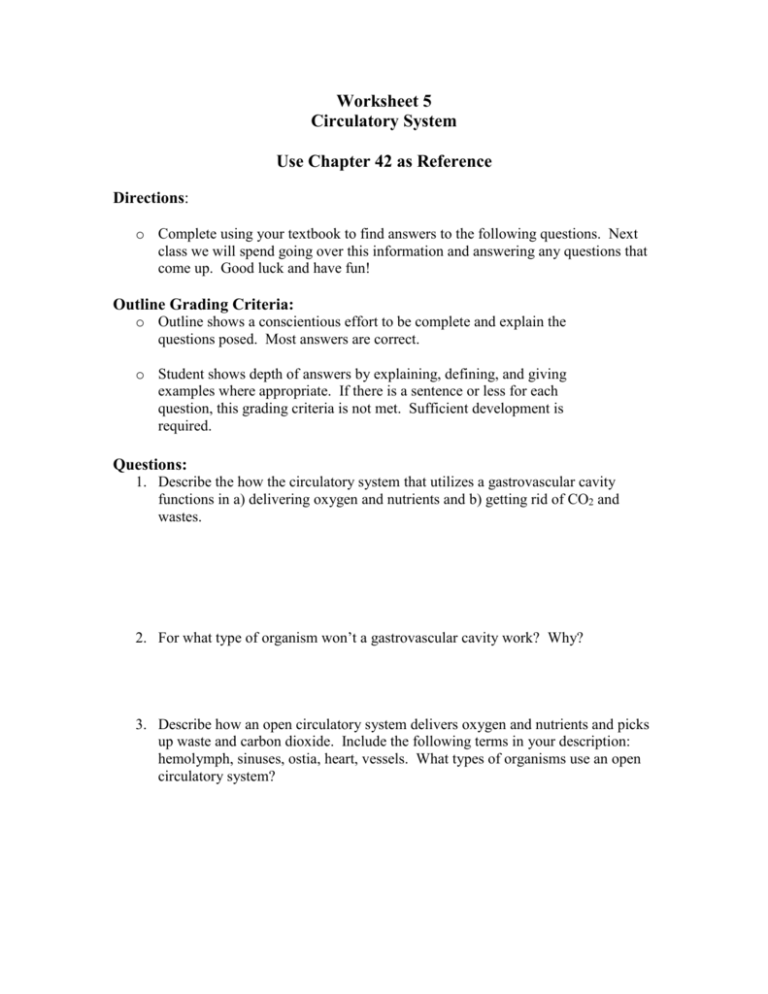
Worksheet 5 Circulatory System Use Chapter 42 as Reference Directions: o Complete using your textbook to find answers to the following questions. Next class we will spend going over this information and answering any questions that come up. Good luck and have fun! Outline Grading Criteria: o Outline shows a conscientious effort to be complete and explain the questions posed. Most answers are correct. o Student shows depth of answers by explaining, defining, and giving examples where appropriate. If there is a sentence or less for each question, this grading criteria is not met. Sufficient development is required. Questions: 1. Describe the how the circulatory system that utilizes a gastrovascular cavity functions in a) delivering oxygen and nutrients and b) getting rid of CO2 and wastes. 2. For what type of organism won’t a gastrovascular cavity work? Why? 3. Describe how an open circulatory system delivers oxygen and nutrients and picks up waste and carbon dioxide. Include the following terms in your description: hemolymph, sinuses, ostia, heart, vessels. What types of organisms use an open circulatory system? 4. Describe how a closed circulatory system delivers oxygen and nutrients and picks up waste and carbon dioxide. Include the following terms in your description: vessels, interstitial fluid, blood, heart. What types of organisms use a closed circulatory system? 5. What are the three main components of a cardiovascular system? 6. Outline the basic flow of blood. Include the following terms in your answer: heart, arteries, arteriole, capillary, venule, vein. 7. Describe a fish’s cardiovascular system. Describe in detail the structure of the heart. How many atria? How many ventricles? Does a fish have double circulation? Why does blood pass through two capillary beds? 8. Describe an amphibian’s cardiovascular system. Describe in detail the structure of the heart. How many atria? How many ventricles? Do amphibians have double circulation? Describe the pulmocutaneous circuit. Describe the systemic circuit. 9. What is the difference between the amphibian heart and the reptile heart? What advantage did this difference provide for the reptiles? Why didn’t the amphibians need this advantage to be efficient? 10. Describe the cardiovascular system in birds and mammals. Describe in detail the structure of the heart. How many atria? How many ventricles? Do birds and mammals have double circulation? 11. What are the functions of the vertebrate circulatory system? Give an example of each function. 12. Diagram and describe how blood flows through a mammalian heart. Include the following: rt and lf atria, rt and lf ventricles, semilunar valves, AV valves, aorta, pulmonary artery, vena cava, pulmonary vein, and lungs. 13. What is the lub-dub your doctor hears when listening to your heart? 14. Explain in detail what causes the heart to beat. This is a discussion of the S/A node. 15. What are the two main components of blood? 16. Describe what makes up plasma. 17. What is the function of a red blood cell (RBC)? 18. How does the structure of an RBC relate to its function? 19. What is the function of WBC’s? 20. What is the function of a platelet? 21. What is blood pressure? 22. Is BP the same throughout the vessels of the circulatory system? Why or why not? 23. Trace blood from the left ventricle to capillary beds, discuss transfer of materials in the capillary beds, and trace the blood back to the left ventricle from there. 24. Distinguish between plasma and interstitial fluid. Be sure to include interstitial fluid in your answer to number 23.
